Expert's Rating
Pros
- Compact box
- Slick setup & interface
- No dish needed
- Nice remote control
Cons
- Can get expensive
- No hard drive for recordings
- Delay vs Sky Q
Our Verdict
The cost quickly adds up when you add 4K, additional pucks, content and other options but the Sky Stream is the most hassle-free, modern way of getting Sky TV and will be the perfect solution for the right customer.
Price When Reviewed
This value will show the geolocated pricing text for product undefined
Best Pricing Today
Over the last few years Sky has diversified the way customers can access its TV services and the Sky Stream is both the smallest and cheapest option.
Essentially a streaming box much like a Roku, Apple TV or Amazon Fire TV Cube, it plugs into your TV and connects to the internet to provide content. It doesn’t use a satellite dish like Sky Q making it more accessible.
If you feel like you’ve seen the device before, it’s because it’s available as a multi-room option to go with Sky’s actual TV, the Sky Glass. The pair run the same software. You can also read up on what to do if your Sky Stream isn’t working.
Design & Build
- Tiny box
- No dedicated audio ports
- Backlit remote control
The Sky Stream is one of the smallest and most unassuming designs for this type of device. It’s a palm-sized square that’s very thin. It won’t take up much space wherever you put it.
There’s not much to see on it beyond a Sky logo. A status LED and power button are hidden underneath while a sensor sits on the front, although the remote works without line-of-sight. On the back, you’ll find four ports: an aerial socket, Ethernet, HDMI and power.
It’s comfortable to hold with a slightly rubbery finish and the simple layout, with certain buttons colour-coded, makes it easy to use
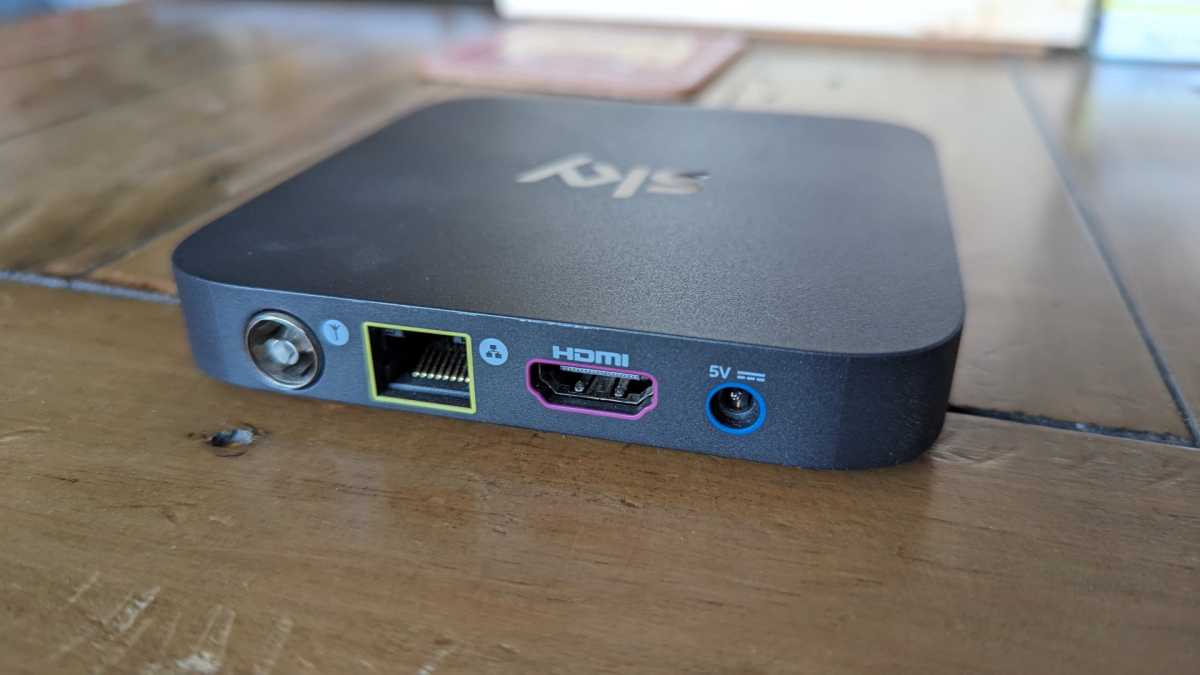
Chris Martin / Foundry
Sky supplies a remote control that’s the same as Sky Glass TV’s. It’s comfortable to hold with a slightly rubbery finish and the simple layout, with certain buttons colour-coded, makes it easy to use. I find having the volume on the right a bit strange but it’s not the end of the world and it is backlit, triggered by motion, which I love.
With Sky Stream being a bit simpler than Sky Q, there are fewer buttons. The remote contains a microphone so you can use voice control if you like – more on that later.
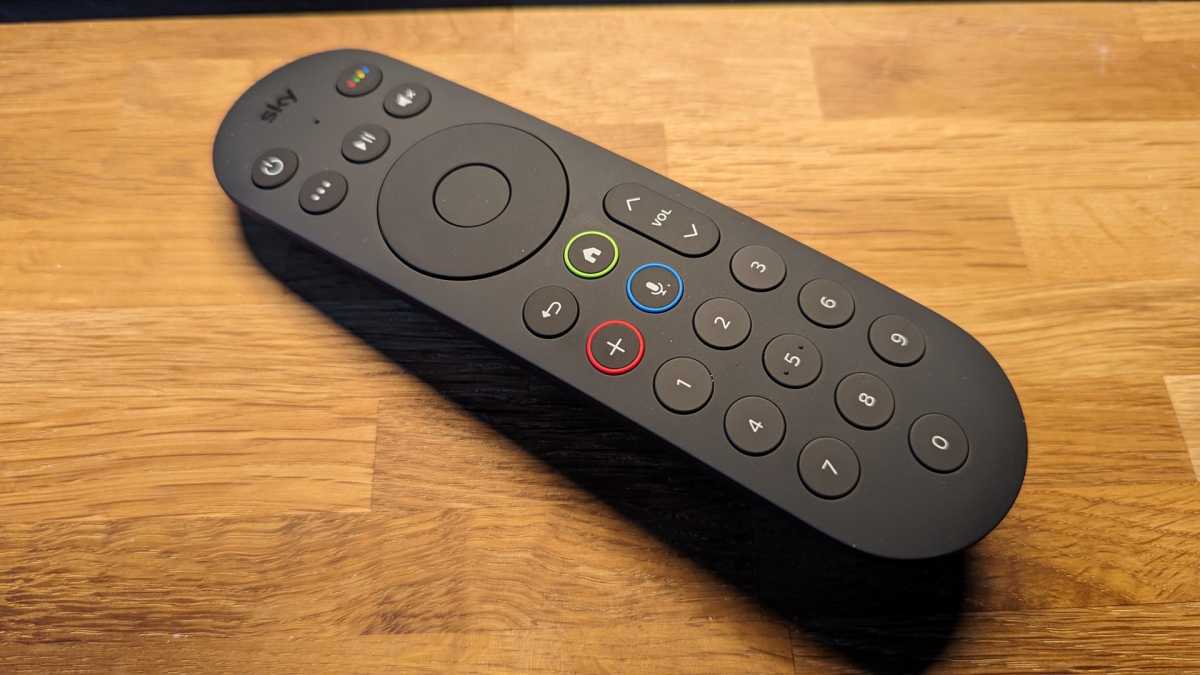
Chris Martin / Foundry
Specs & Features
- 4K Ultra HD with HDR
- Dolby Atmos
- Playlist rather than recordings
Your best option for hooking the Sky Stream up to the internet is the Ethernet port on the back but it has Wi-Fi as well. You’ll need a speed of at least 25Mbps to stream content and even then the Stream (along with Glass) comes with a key downside compared to Sky Q, a delay. Bear in mind that adding additional pucks requires additional bandwidth.
With the images potentially up to 30 seconds behind truly live TV, this may be an issue if you, for example, like to follow sports along with social media or a fantasy league.
Though the box is tiny, it’s perhaps more powerful than you might expect, able to output 4K Ultra HD resolution in HDR
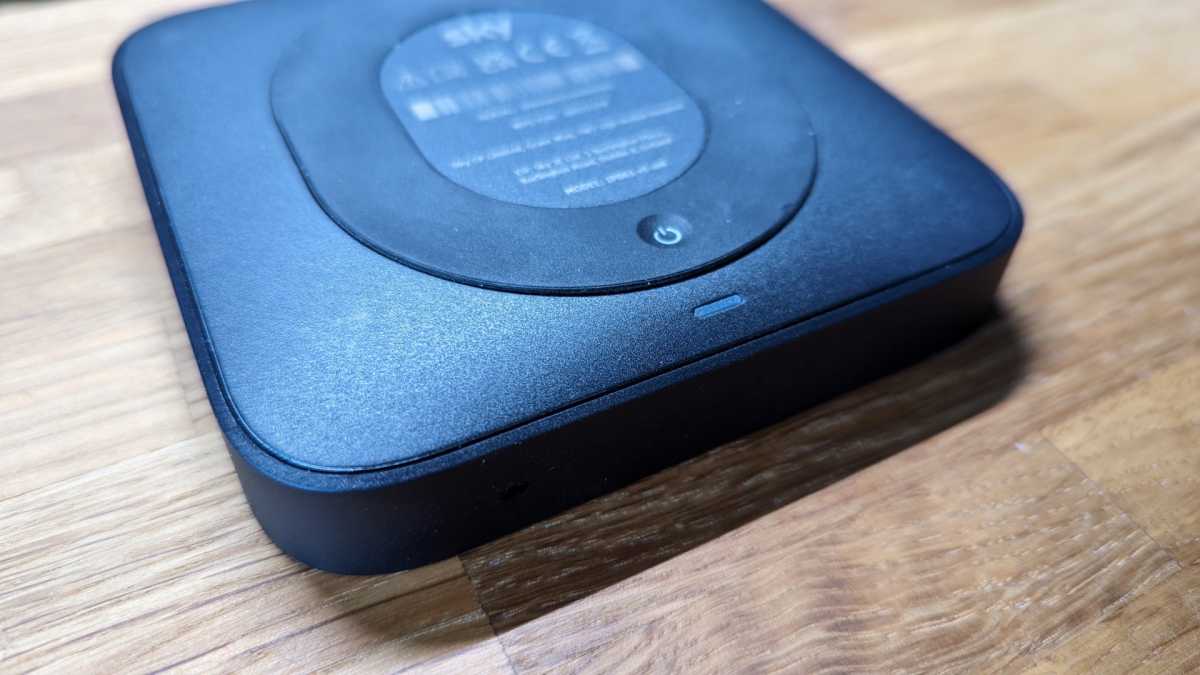
Chris Martin / Foundry
Though the box is tiny, it’s perhaps more powerful than you might expect, able to output 4K Ultra HD resolution in HDR – though this costs extra as you’ll see in the price section later.
It’s also Dolby Atmos ready but it’s a shame that there’s no audio output like an aux jack or optical to connect speakers or a soundbar.
As you might expect, there’s no physical hard drive on which to record content like you would with Sky Q. Instead, you get a Playlist, which works much like one on Spotify does.
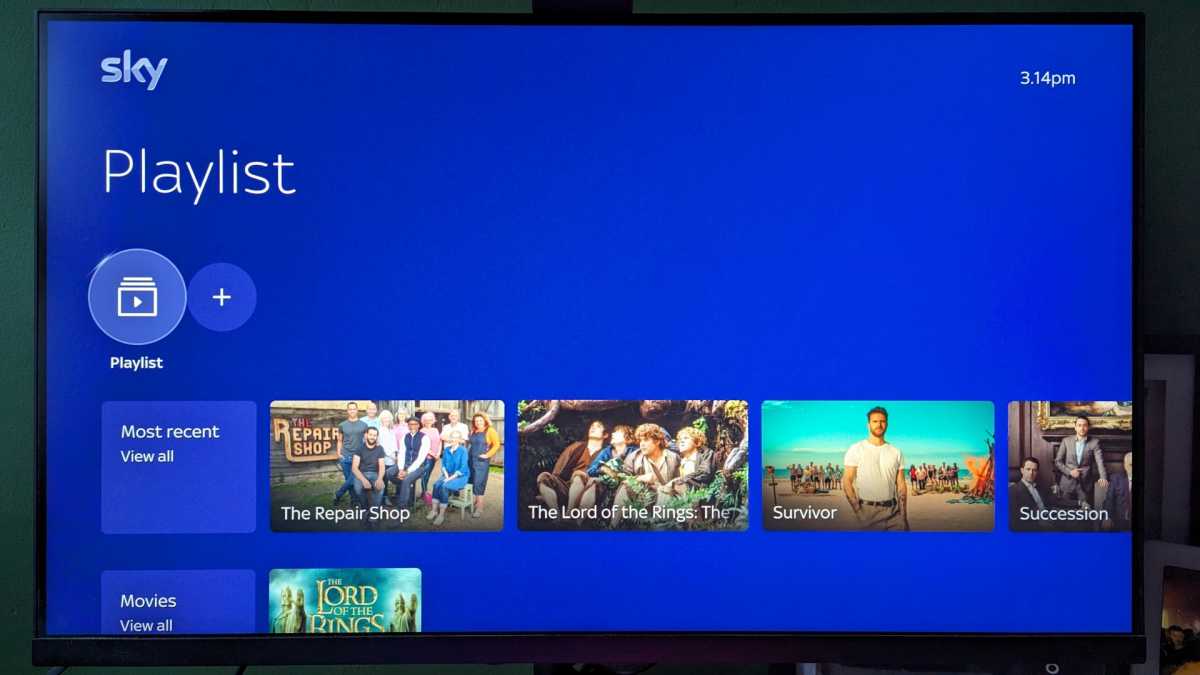
Chris Martin / Foundry
As you browse around the interface you can hit the ‘+’ button on the remote to save things to your Playlist and this works very well, with all episodes and series being pulled in for your convenience.
There are a few caveats to be aware of, though, starting with the fact you can’t use the button from within apps.
The Playlist is neatly divided up into sections but since these are not real recordings, they may disappear if, for example, they are removed from the streaming service which provided them in the first place – so don’t save something and expect it to be there forever.
It’s better to think of your Playlist as shortcuts rather than content you ‘own’ and it’s worth noting that not everything you see on Sky Stream can be saved there. What you do have is the ability to create up to five playlists so people don’t have to share one.
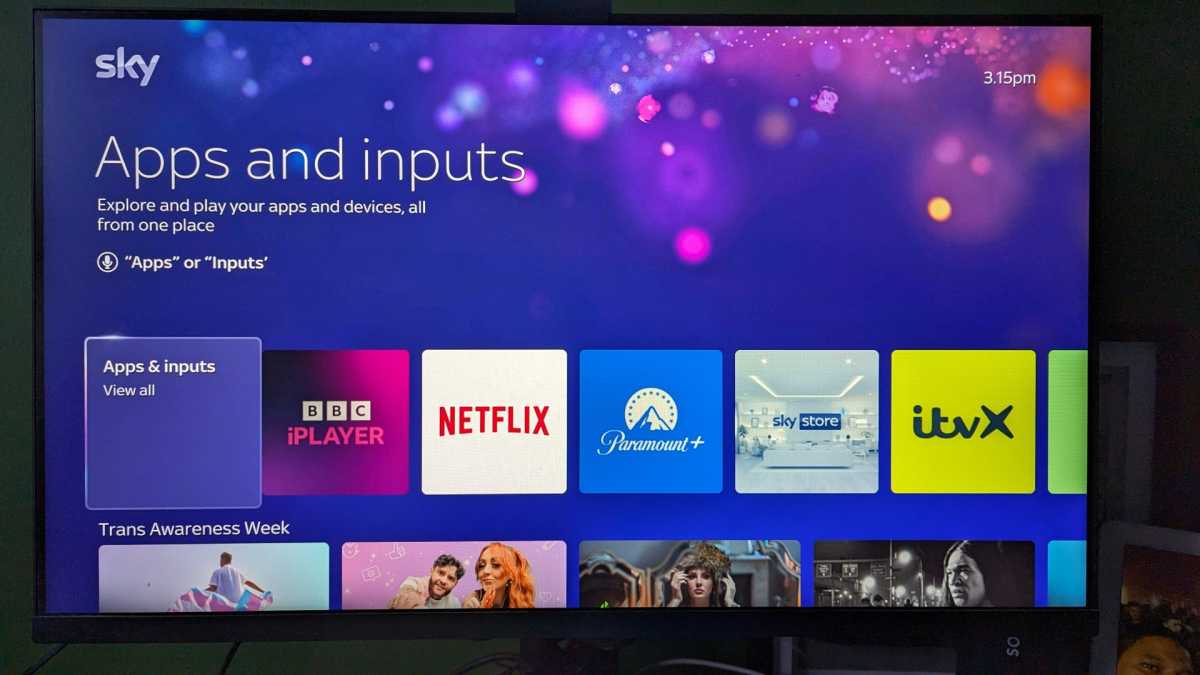
Chris Martin / Foundry
There are plenty of streaming apps available including BBC iPlayer, ITVX, Channel 5, Netflix, Amazon Prime Video, Paramount+, Disney+, Apple TV+, Spotify, BBC Sounds, and Amazon Music. You will find more on Fire TV and Roku streamers but for most people, the portfolio with suffice.
There’s no app store to go and add more so you simply browse what is presented to you, which includes various games which, other than Tetris, I’ve never heard of.
User Interface
- Same as Sky Glass
- Colourful with plenty of content
- Voice search
As mentioned earlier, Sky Stream is part of the same system as Sky Glass. This means the user interface is different to Sky Q. I found it a little tricky transitioning but there’s a good chance that you’re new to Sky rather than transitioning from Q.
The user interface is certainly very colourful and inviting. In true modern streaming fashion, content from different sources is all shown together with clear logos, so you know whether something is from a Sky channel, Netflix or otherwise.
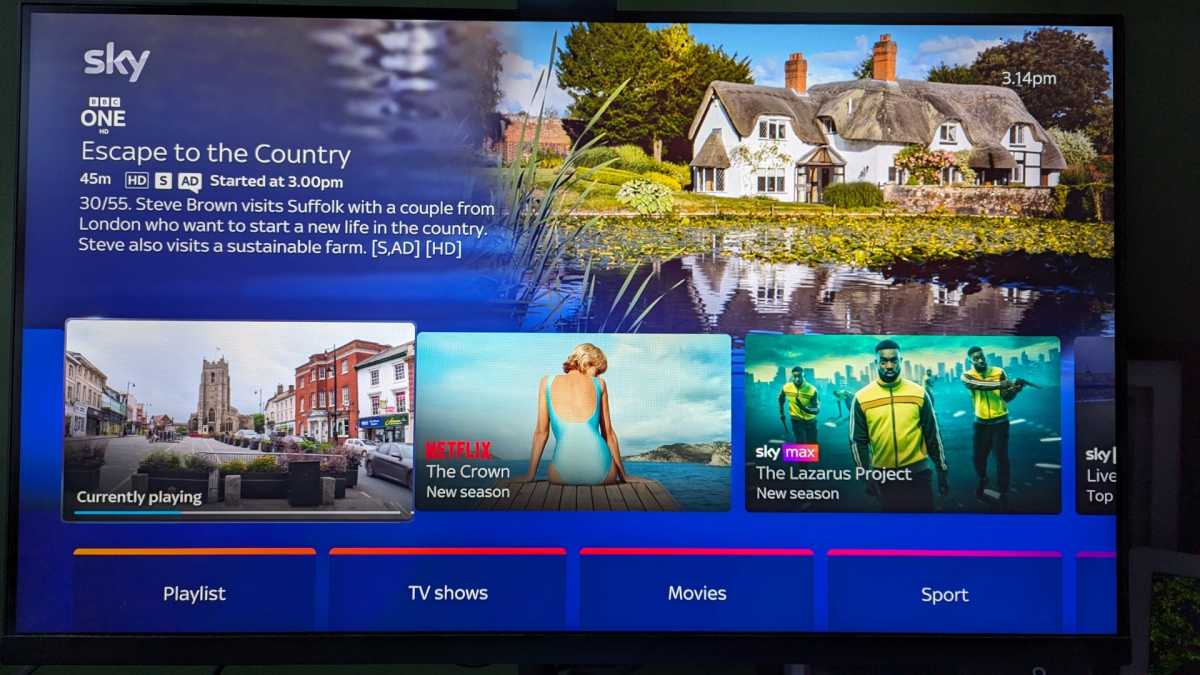
Chris Martin / Foundry
At the top is currently playing (which can even be paused in its thumbnail) followed by trending items such as newly released seasons like The Crown or sporting events with what Sky calls ‘Super Sections’ below. Here you’ll find your Playlist as well as sections for TV shows, Movies, Sport, Kids, News and more.
Beyond this, you will primarily flick through rails of content with things like collections, continue watching, top 10 this week, must-see movies and kids favourites. Note that these are not fixed so can change over time depending on what Sky wants to promote.
For example, at the time of writing, a dedicated Trans Awareness Week rail is surfacing content such as Transhood, Not Your Average Family and RuPaul’s Drag Race.
Rails for Apps and Games are also interspersed as there’s no button on the remote for the former or any dedicated services – despite Netflix coming bundled as standard.
Performance is generally very slick and you can pause and scrub content with minimal hassle

Chris Martin / Foundry
You can watch live TV (with the delay mentioned earlier) but there are fewer channels available here compared to Sky Q, although I’m sure the selection on offer here will provide enough entertainment.
I’m not the biggest fan of the live TV section with its huge category headings with the EGP (Electronic Programme Guide) semi-hidden behind but I’m very much used to the Sky Q way of doing things. It is definitely annoying that you can’t flick through pages of channels at a time since there are no up and down channel buttons on the remote.
Performance is generally very slick and you can pause and scrub content with minimal hassle. For select shows, you’ll be given a ‘watch from the start’ option, which is very handy. Occasionally thumbnails for content fail to load as you can see below with Avengers: Endgame.
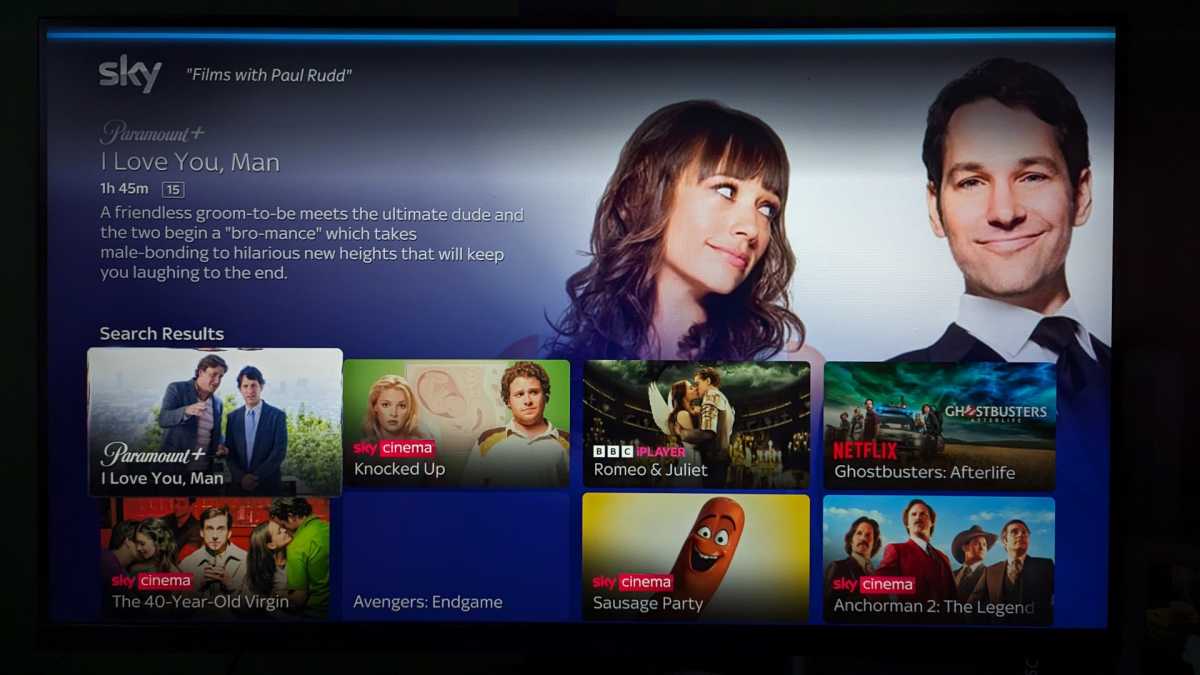
Chris Martin / Foundry
With such a large interface, it can take a while to browse around but if you know what you want to watch, or even vaguely, you can use the voice control on the remote which has a built-in microphone.
You can ask for just about anything from a sport to a director to a specific show. Similar to Sky Q, I don’t find the accuracy of speech detection particularly great, but it can normally get there within two or three attempts for the more complicated words.
Asking for “Films with Paul Rudd” took about 20 attempts, though.
Price & Availability
As is common with products like this, there’s not a simple price for the Stream. Instead, there’s a base subscription fee for Sky Entertainment & Netflix (the basic plan for Netflix) and then other elements cost extra depending on what you want.
Even the base price has two different options with the choice of 18-month or 31-day rolling contracts. These cost £26 or £29 per month respectively, although Sky often has offers on.
Here’s a full breakdown of the extras you can add to Sky Stream, many of which Sky regularly discounts but these are the RRPs.
- Sky Sports – £25pm, 18 months
- Sky Sports – £27pm, 31 day rolling
- Sky Cinema – £11pm, 18 month
- Sky Cinema – £13pm, 31 day rolling
- TNT Sports – £30pm, 18 months
- Sky Kids – £6pm, 31 day rolling
- Ultra HD & Dolby Atmos – £6pm, 31 day rolling
- Ad Skipping – £5pm, 31 day rolling
- Netflix Standard – £4pm
- Netflix Premium – £8pm
With so many options, the difference in how much you could be spending is huge. Just sticking to the basic plan costs £312 per year but you spend nearly £1,500 a year if you add everything onto a 31-day rolling contract.
And this is all before we talk about factoring in additional TVs around your house. Whole Home is £12 per month and you get one extra Sky Stream Puck included but adding one, two or three will incur set-up fees of £39.95, £79.90 or £119.85 respectively (RRP but are often reduced).
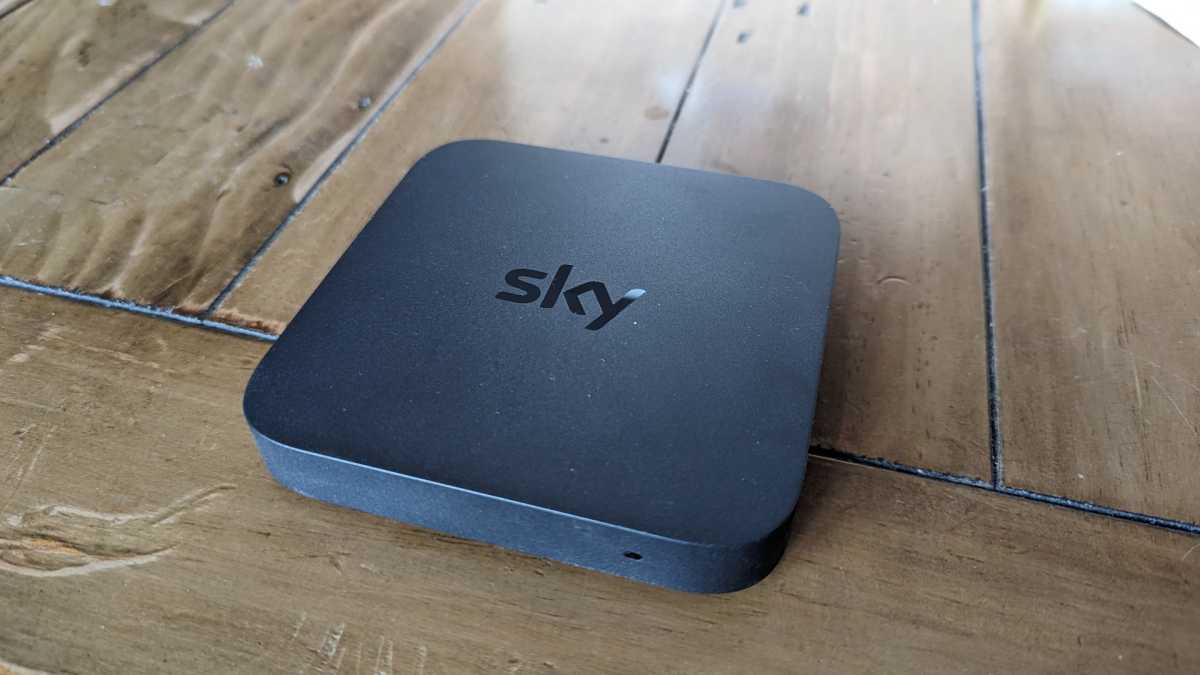
Chris Martin / Foundry
Should you buy Sky Stream?
For the right customer, the Sky Stream will be perfect. If you don’t want (or can’t have) a satellite dish for Sky Q and don’t need the Sky Glass television but want Sky in a modern way then it’s perfect.
It makes total sense for Sky to offer its content in this way, meaning you can simply plug into any TV, connect to the internet and get watching. It’s easy to use and there are lots of handy features.
There are some downsides though starting with the cost which can quickly add up, especially when you consider that Ultra HD and Dolby Atmos are not included in the base plan.
You’ll also need to be ok with the lack of a hard drive for recording so content you save here won’t necessarily be around forever.


